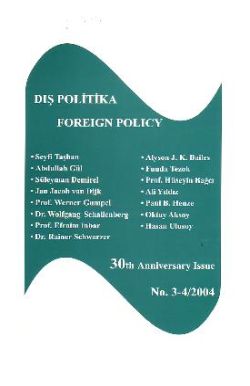Differentiated Risk and Threat Perceptions of EU Members and Their Impact on European Security Cooperation
Differentiated Risk and Threat Perceptions of EU Members and Their Impact on European Security Cooperation
Author(s): Alyson J.K. BailesSubject(s): Politics / Political Sciences
Published by: Dış Politika Enstitüsü
Summary/Abstract: The formulation of this topic is very interesting to me, and is worth lingering over for a moment in itself. First, it is a question which only makes sense if we assume that the EU has now become or is turning into some kind of security (and potentially, even defence) community. In the Cold War period, security risks (and strategic threats in Europe were clearly NATO’s business. The kind of risks the EU dealt with were the exhaustion of fish stocks or impoverishment of small farmers, or—in the nearest approach to something we might recognize as a security issue—the disturbance of energy supplies. The definition of risk and threat in the NATO context was also very simple, focussed on the Soviet Union and Warsaw Pact and (to a lesser and highly qualified extent) the power of Communism in the world at large. There was little room, either political or objective, for the European members to disagree about the nature and degree of the menace; and suggestion of creating smaller regional communities with a more specialized threat or cooperation focus—such as was sometimes suggested for the Nordic region—was frowned upon as undermining the Alliance’s unity and the integrity of strategic linkage.
Journal: Dış Politika
- Issue Year: 2004
- Issue No: 3+4
- Page Range: 35-56
- Page Count: 22
- Language: English

